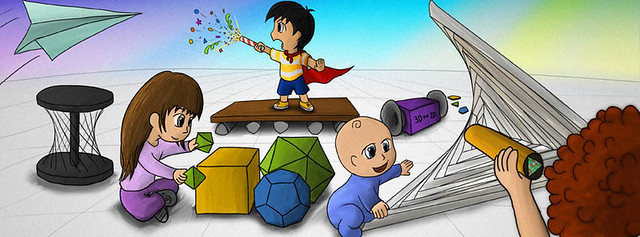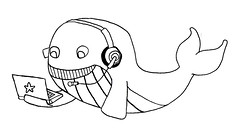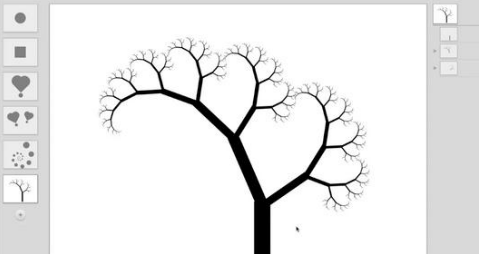Kids Consult reviews three chapters from “Moebius Noodles”!
Kids Consult is an amazing consulting company founded by three girls, who are just a couple of years older than the target audience of the “Moebius Noodles” book. They review mathematics games, puzzles, books and other materials. Here is their review of three chapters from the book, and some of the changes that resulted.
Kids Consult:
Function Machine
- We love the illustration at the top of this page. It really adds reality to the concept.
- Even though this is the most “mathy” of the set, it’s also the most interesting. This is probably because it has no pre-prescribed instructions. Even though the others do need directions and examples, try not to get too constrictive – some parents might think that these are the only variations for the activities. Be sure to mention that those are only possibilities.
- Great idea with the actual building of the machines, but it would be good to put some sample photos up of actual built ones.
- The sentence is way too long, which makes the content very hard to understand clearly and completely: “Use qualitative functions, for example, a machine that adds a sticker to each toy thrown into it by a baby or a machine that finds its mommy for each baby animal.”
- Well done. This is amazing!
Double Doodle Zoo
- This is a classic activity, and a favorite with kids. Good choice.
- However, there may be one downside to this: they might get bored, and shun the activity. So, on this activity especially, though this applies to all, have more and more interesting variations. For instance, suggest that the kids try to make a chain with 2 or 3 different types of figures on it, for example.
- Excellent job accommodating all the age groups involved.
- Overall, a job very well done!
Snowflake Symmetry Demo
- Move the snowflake making instructions closer to the beginning of the document. For kids and parents who start right in at the top, this does not help them have pretty snowflakes, but little messes and frustration instead.
- Please explain how this relates to symmetry. Some kids may not realize this, and if their parents cannot explain to them what’s going on, you end up with some problems.
- How does someone study times tables with snowflakes? Please explain.
- Could this be combined with the previous chapter? It’s very similar…
- It is great how you explore the possibilities of working with snowflakes. All in all, this is a great thing to try at home.
Question
Is this meant to be for parents to read and kids to look at pictures, or is it for just parents or kids to read on their own? If this is only for parents, then you don’t need as many illustrations, do you?

MariaD:
Dear Kids Consult reviewers,
Thank you for the detailed and thorough review. It is very useful in our work. I will recommend your services to colleagues!
About Double Doodle, you wrote: “So, on this activity especially, though this applies to all, have more and more interesting variations” – we have variations inside light bulbs, which symbolize bright ideas (page 2) and the “blueprint” area that shows a few more ideas at the end (page 4). Retrospectively, I see that these ideas don’t necessarily take math to the next level of complexity, like some other chapters. Is it why you thought they were less interesting? Good catch; we will be checking all chapters for that now.
As you have seen, we don’t usually have visual instructions upfront. The layout of all chapters is:
Page 1 – inspiring big picture
Page 2 – short text description, mindmap of keywords, bright ideas
Page 3 – three ages and a picture representing them
Page 4 – blueprints for more ideas
Do you think we should move the basic visual instructions to Page 2 in the case of snowflakes?
The next iteration of the long sentence: “Use qualitative functions, that is, machines that work without numbers. How about a machine (good for babies and toddlers) that adds a sticker to each toy thrown into it? Or a machine that finds mommies for baby animals?”
Kids Consult:
Thank you. We are glad that the reviews were useful.
About the interesting variations, we were just making sure that parents would not think that those are the only possible ones that work.
We think that you should move the visual instructions to page 2 for the snowflakes.
So, is this for parents, kids, or both, to read and look at pictures?
MariaD:
We will play with the chapter layout to see how it works with instructions on page 2.
The idea is that parents will read the book, but kids will be nearby, looking at pictures and maybe discussing plans for games with parents. I picture a parent reading it, with a kid in the lap playing with something else (like a smartphone game) and looking at pictures occasionally.
Many parents are VERY SCARED of math. Pictures help them – they really do. Pictures are friendly and accessible. This was the goal here – therapy, if you will. People who aren’t scared of math will appreciate 3D modeling in the pictures, I think, so they won’t mind that being a picture book either. At least that’s the goal.
Posted in Grow
Discovering Signs and Symbols
Lately my 5-year old has been very interested in signs – road signs, signs at the entrances to parks, museums, office buildings, etc. Which led to some really interesting conversations about how rules (and ideas in general) can be represented as symbols.
Unlike written words or letters (which are symbols as well), well-designed signs are much more intuitive and easier for pre-readers and early readers to interpret independently. By the way, have you ever noticed how many of the signs we encounter are the ones that prohibit something rather than inform or encourage? I never did until my son pointed it out saying “see, this sign says no smoking, this – no drinking, this – no music, this – no guns. Signs are for saying “no” to things.”
So back to the conversation that we, my son (S) and I (M for Mama) had a few days ago:
S: Mama, when my tree house is finished, I’m going to invite all my friends and put a big sign “no girls allowed”
M: How would you make a sign like that?
S: Easy, I’ll just make a big red circle with a thick line across like that (draws in the air) and there will be a girl on it, like on bathroom doors.
M: Ok, but what if your cousin A comes to visit? Can she play in your tree house? (My son loves playing with his oldest cousin)
S: (after some thinking about it) Sure!
M: But then you need to make a different sign. What would it look like?
S: (after some more thinking) Ok, I’ll just put her picture next to the other sign. It has to be a smiling picture.
M: What if (names of a couple of girls he knows well from playdates) want to come play? Will you let them into the treehouse?
S: (after even more thinking) Yes. All girls I know can come and play. Only girls who are strangers can’t come. And if they are not very little.
M: Ok, but then you have to change the sign.
S: (sounding a bit weary) I dunno. Put more pictures. (runs away)
We had a few more conversations about signs that were similar to this one. My son would come up with a very broad rule and a sign for it. I would then suggest scenarios that did not fit the rule and he’d adjust the rule. And we’d try to figure out how to create a sign that would accurately reflect the new rule.
Since all these conversations were completely “on the fly”, usually while walking or right after reading a bedtime story. Which, I figured out, is not the best time since we don’t get to put any of the sign designs on paper.
But now I’m thinking what kind of a sign-making game can I put together (something that wouldn’t take too long). Any suggestions? Please share!
Posted in Grow
Newsletter June 30, 2012

Welcome to adventurous math for the playground crowd!
I am Moby Snoodles, your friendly cetacean guide to the Moebius Noodles community. I love to receive mail at moby@moebiusnoodles.com

Book news
We created eighteen games for the book and now sixteen are ready to be illustrated. In addition to our own games, the book will have a few games designed by our supporters. Some of our supporters contributed at the chapter-making level during the crowdfunding campaign in September, so there will be a few more chapters for them.
We always knew how important illustrations are to a book. Yet knowing is one thing and actually coming up with ideas for illustrations is another. One of the Moebius Noodles main illustrating principles: the picture can’t be just a decoration! Each and every one must tell its own math story, strongly connected to its game. Fortunately, our illustrator, Ever, is as passionate about math as everybody else on the team.
As Ever was working on the chapter on iconic quantities, he drew kids making a collection of sixes. Now, six is a good choice of a number for playing with iconic quantities. Six is even, so all our symmetry games work. Six is beyond the subitizing range (knowing a number at a glance), so it’s a fun challenge. Can you spot the changes Ever made between the old version (on the left) and the new one (on the right)?

Our blogs
We had two awesome guest stories since the last newsletter. Julia Brodsky from Art of Inquiry described a magic transformation game:
Prepare a big “wizard” hat and a “magic wand.” Prepare a set of small toy figurines (Safari Wild Tube, animal counters, matchbox cars, or something like that).
Show a toy to a child. Turn the hat upside-down. Put a toy under the hat. Say a spell and touch the hat with a magic wand. Put your hand under the hat and take what was hidden under the hat beforehand out of the hat. Voila – the toy turns into a different toy!
A family post from Dr. Richard Elwes and Haruka Elwes presented soft polyhedra for babies:

Our Facebook page just reached 200 fans. Head there to discuss media such as the TED talk on creativity and mathematics by Mr. Honner:
Research
The four basic operations used to be addition, subtraction, division and multiplication. This might have been sufficient in medieval times, but the world has changed considerably. Not to mention that the old system does not reflect how the mind of a toddler works.
In the last few decades, multiple studies confirmed that babies are born with the ability to subitize, that is, instantly recognize small quantities. While more studies are needed (and are being conducted), we now have data-based reasons to believe the baby’s brain comes with three more separate and related sets of math tools.
One set is for counting, addition and subtraction: the additive world. Another is for working with sets, units, collections, splitting, sharing, proportions and groups of groups: the multiplicative world. Yet another is for zoom, nested objects, fractals, self-similarity, recursion, powers: the exponential world.
All four worlds are available to babies, toddlers and young kids in playful, intellectually honest forms. We strongly suspect that lack of activities in any of these worlds leads to future difficulties with related parts of math. That is why in the Moebius Noodles book we have games that explore all four of these worlds.

Lapware
Discuss this software sent to us by Algot Runeman, a long-time supporter of Moebius Noodles. Even a baby can use the easy, beautiful RecursiveDrawing.com tool. Every mouse gesture or touch causes something fractally cool to happen! Yes, I just made up this phrase.
Talk to you again mid-July!
Moby Snoodles, aka Dr. Maria Droujkova
Posted in Newsletter
Different Perspective
Yesterday I chatted with a friend whom I haven’t seen in a while. Her child, a bright and energetic 8-year old, participates in quite a few extracurricular activities – ballet, gymnastics, tae kwan do, and art. Next year, music lessons might be added to the mix.
I asked my friend how they choose the activities for their daughter. Well, ballet was Mom’s choice since it was something Mom always wanted to do herself, gymnastics – Dad’s, since he was in gymnastics as a boy. Martial arts was a joint decision because it is known to improve child’s discipline. And art was the girl’s own choice.
Then I asked this question: if there was a math club or a math circle near you, would you consider signing up your daughter?
Her answer was “Absolutely! We are actually considering some extra math drills for her since she has some problems in school.”
This reminded me of another conversation, months ago, when another friend said that she wasn’t interested in a math club for her daughter because “she was doing well enough without it”. Yet another friend, this one with a preschooler, said that it was simply too early for her child to learn math.
I find it very interesting why there’s such a difference between attitudes towards, say, a dance class or an art class and a math club. Why the reactive attitude? I mean, why wait until a child falls behind in math class? Why math clubs are thought of as places for remedial math? Why sending a 3-year old to ballet classes is perfectly “normal” while playing advanced math games with her is not (“are you trying to raise a genius?”, “why are you torturing a child?”, “why don’t you let her enjoy childhood for now?”, and similar questions).
What if we looked at art, music, dance, gymnastics, LEGO and other children’s activities from a different perspective. Each and every one of these offers so many opportunities for mathematical discoveries! We just need to help our kids recognize and explore these opportunities. How can we do it? Where do we start?
Posted in Grow




